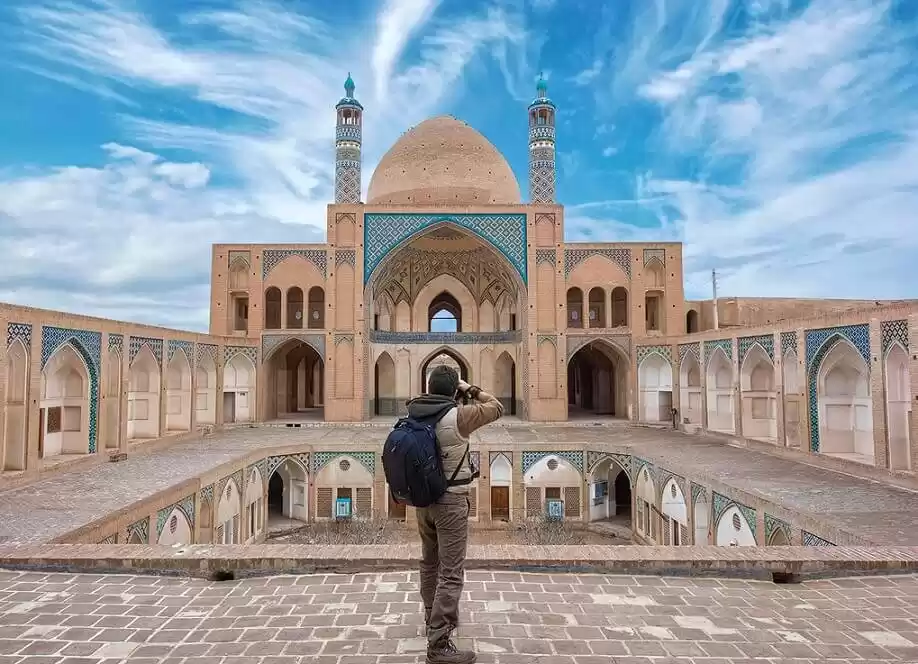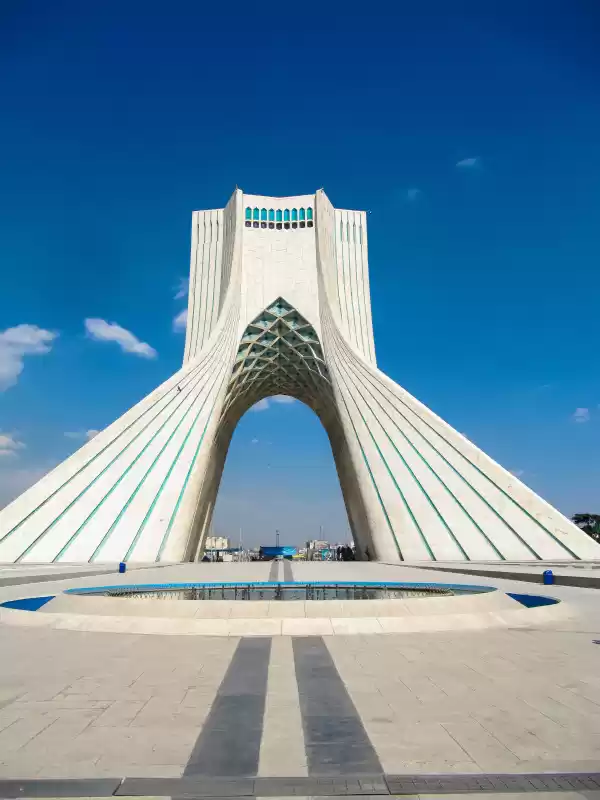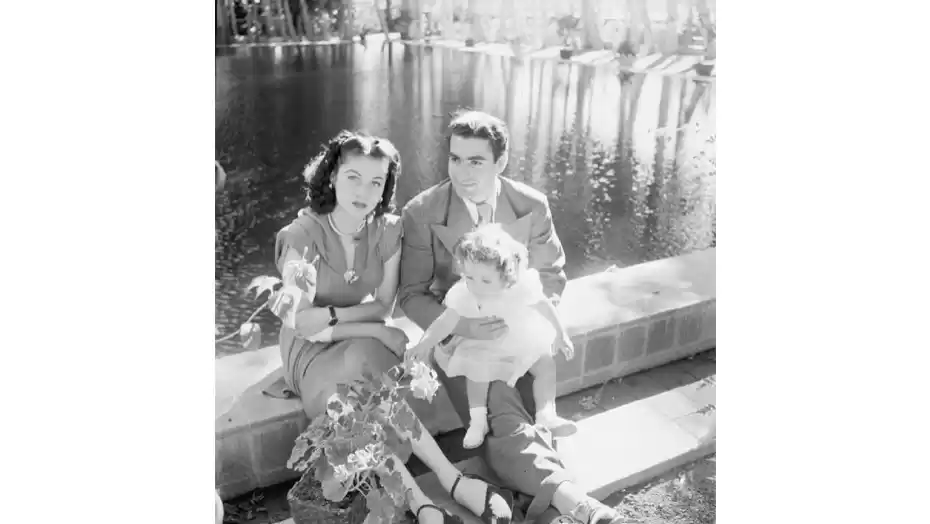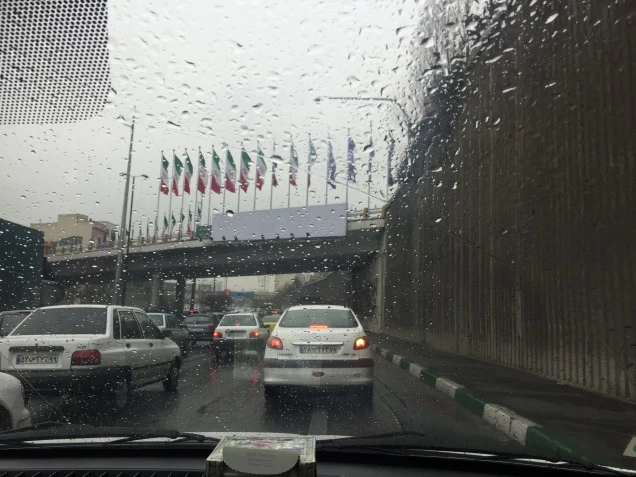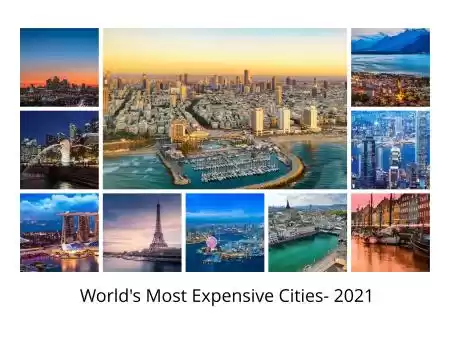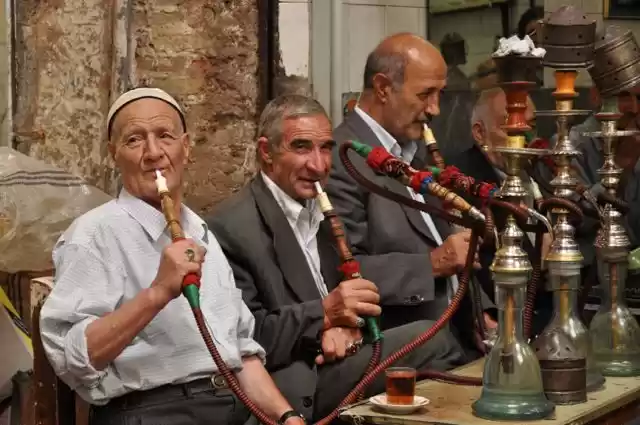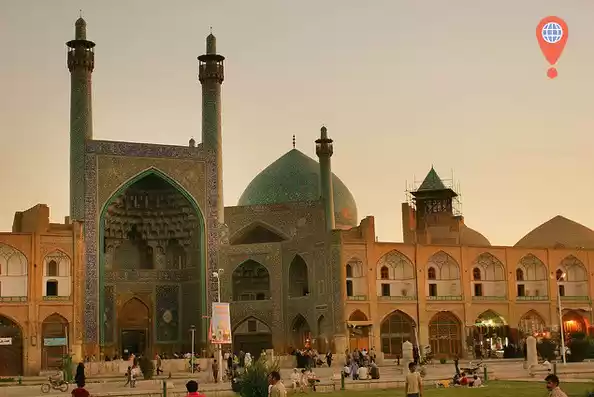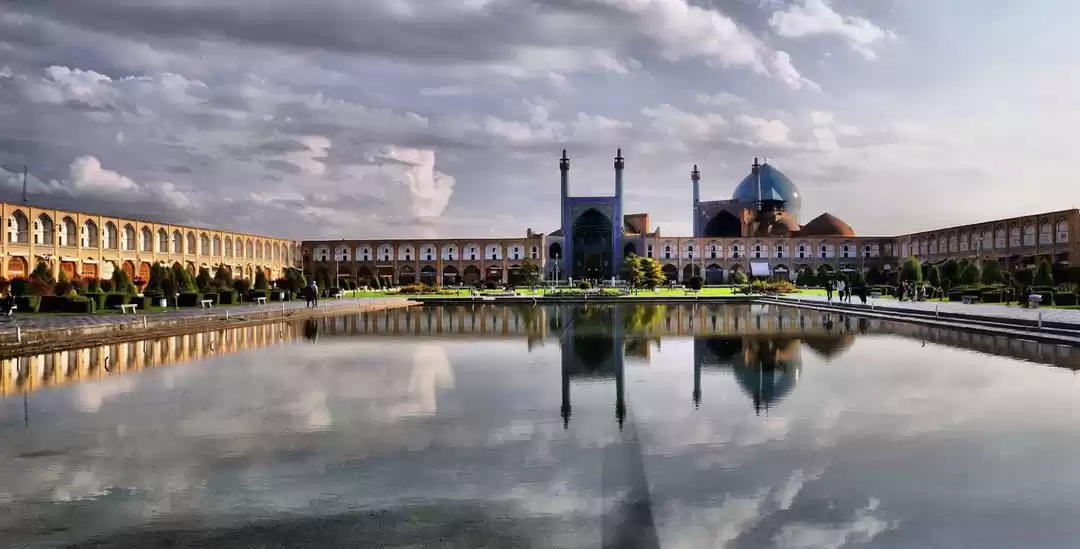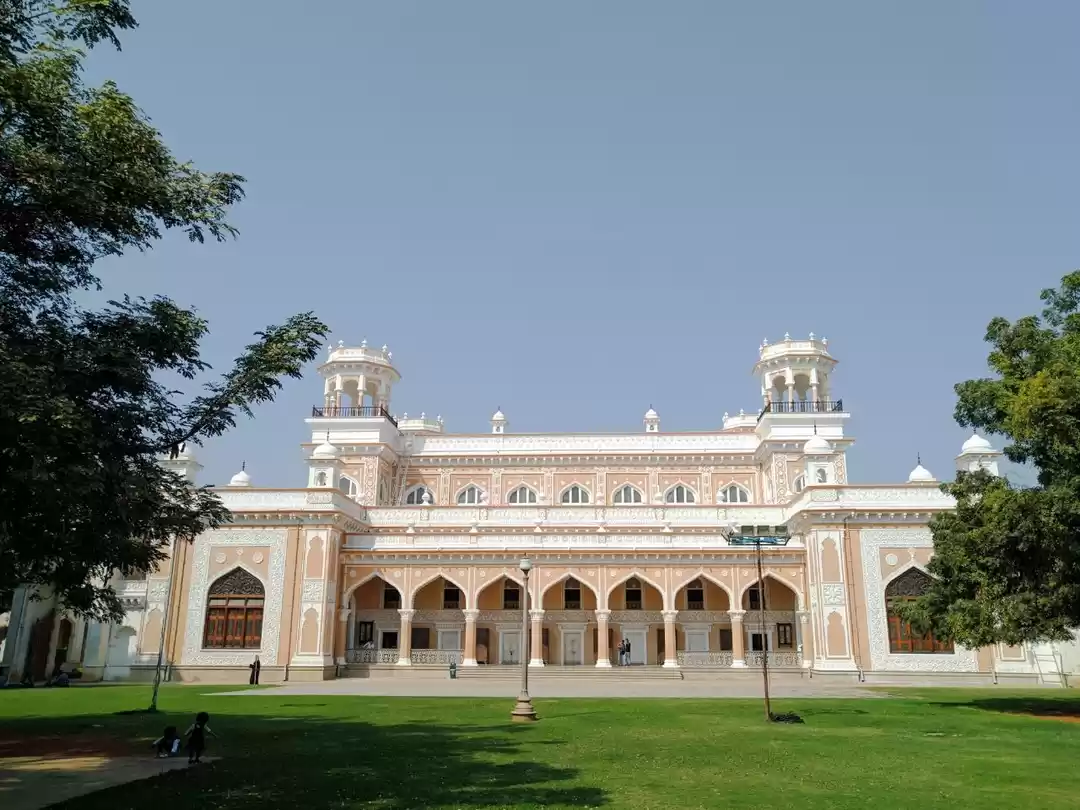
CAUTION: EXTREMELY DESCRIPTIVE!
Prologue:
Have you ever dreamt of something in life for so damn long that you want it very badly and can do anything to make it come true? That dream for me was travelling to Iran :) Being interested in cultures and architecture, visiting Iran was a big life goal for me that I had to fullfil at the earliest, coz my mind just wont be at peace till then! Till now I had only made so many failed plans to go to Iran, nevertheless I didn't stop :)
But around September 2019, finally things seemed to fall in place on all fronts. I aggressively started pursuing them- reading up as much as I could, calling up in embassy, figuring out updated visa process (which was so confusing!!), checking flight tickets et al! My luck couldn't be any better and Oman air sale started just then! A Mumbai- Tehran return ticket that usually costs more than 40k INR, was up for just 23k. Just then I knew, this is my time babyyyy! It's finally happening 🥰 |End of prologue|
Day 1: At last it was that day! Reached Mumbai airport, did the formalities and took the boarding pass in my hand, read it multiple times and let that sink in! Yes, this really was happening..

Day2:
My flight to Tehran via Muscat which was originally going to land in the afternoon, got delayed and instead touched down in Tehran in the wee hours of next day. All the ladies in the flight smirked at one another and put on a stole on their heads to cover their hair with hijab. Seemed like I had officially entered the Islamic Republic of Iran.
In half sleep I walked out of the aircraft along with the other deboarding passengers. I could see pictures of various monuments in Iran proudly displayed on both sides of the causeway connecting to the immigration area. At the end of the corridor, I bought myself the compulsory travel insuarance for 15€ and proceeded for the Visa process which barely took another 5 minutes. After the payment of 90€ at one of the counters, I was issued visa and was directed to proceed to the immigration counters just in front of it. Maybe due to the odd time of flight landing, I was the only foreigner in the separate queue for Non-Iranian passports. Needless to say, another 2 minutes and I was allowed in Iran with no traces of any visa sticker or stamps in my passport.
From the relatively less crowded immigration hall, I took escalator down to the baggage collection area and was shocked to see this part of the airport was still very crowded and bustling even at this hour. My first impression of Tehran's Imam Khomeini airport was that it didn't look very modern. Old floor tiles, worn out conveyor belts, very 'normal' looking arrival hall, old used and abused elevators and a lot of chaos!
I collected my bags and passed them through security scanners which was again smooth, no questions asked. As soon as I collected my baggage on the other side of the scanner, I was surrounded by a lot of Taxi guys speaking in Farsi. It was quite understandable that they had no doubts whatsoever that I am not an Iranian, as our looks are quite similar. Only when I spoke in English and asked them for direction to the money exchange counters, they navigated me there just by pointing finger in the opposite direction. My Instagram friend Behrad who is an Iranian Zoroastrian with Indian roots, was constantly in touch with me for all these years for planning this dream trip. So, as Behrad had advised me, I just exchanged very little amount at the counters, just good enough for my taxi ride to the hostel. After the exchange, another taxi driver approached me and quoted 10USD to take me to my hostel in Baharestan square. Considering that the airport is 1 hour outside the main city, I thought it was a fair price, especially at this odd hour. I told myself, I would have paid higher amount for this distance in Mumbai with night surcharge. Without any haggling, I agreed and we went to the parking area and drove off towards the city.
At this hour, the city looked awfully quiet, I wondered how it must look during the day time. Nevertheless, the wide, clean and smooth roads in this 'heavily sanctioned' country really impressed me. Just couldn't wait to see Tehran after a few hours!
After about 50 minutes my Taxi reached the beautiful Baharestan square, decorated with a huge traffic island with garden and sculptures. My hostel was located just in one of the streets close by.
Upon reaching the hostel, I rang the bell and a smiling face inside welcomed me in. I quickly checked in and got my bed in the male dorm and slept for few hours. Just before heading to the bed I dropped Behrad a text that I had reached my hostel and that I would see him in few hours in my hostel.
As decided, Behrad reached hostel in the morning. I was so happy to see him. We finally met after 4 to 5 years of virtually knowing eachother! I handed him over some books he had asked me to get from Mumbai from Amazon. Well, just like other American companies, Amazon too doesn't work in Iran. Behrad spoke to my hostel's receptionist and suggested to buy a local sim at the hostel itself. I did just that and then we walked out.
My hostel was just a minute's walk from Baharestan Metro station. Just opposite, Behrad pointed to a massive pyramidal building that served as the earlier parliament building of Iran.
We entered the underground metro station through an escalator and whoaa saw hundreds of people on the opposite side escalator, exiting the station. Most people, both ladies and gents in equal proportions were rushing to their workplaces, all wearing beautiful winter clothes and EACH one more good looking than the other. It was literally like seeing a fashion parade of world's best models all together! Gods who created the world, and especially humans seemed to have taken extra interest when it came 'designing' Iranian men & women!
Behrad rushed me to the ticketing counter and bought me a metro card which could just be punched in and out at the entry and exits, rather than buying a token every single time. He gave me a brief orientation of how the Tehran Metro system works. Thankfully enough, In Iran, although very few people understand and speak English, bilingual signs in English along with Farsi are absolutely everywhere.
We got off at the Ferdowsi station and came out to the streets. Ferdowsi avenue in Tehran is known for its endless shops of currency exchange! We walked past a few shops checking out their exchange rates displayed outside. A lot of illegal money sellers standing on the streets offer cheaper rates too, but I was strictly asked to stay away from them by multiple people, hence I paid them no heed. We went into one of the shops that seemed to offer better rates and got some 300USD exchanged. Due to sanctions, the value of Iranian Rials is so low that 1USD almost gave me 160,000 Rials. Just imagine how rich I felt that moment to carry such heavy bunches of currency notes when I exited the shop.
Me and Behrad had so much to talk, and he had so so much to show me around at every nook and corner, however, he too had to rush for his lectures, so he promised to meet me again in the evening after he is done. Before that, he took me to Tehran's Atashkadeh (Fire temple or Agiary as we call it in India). This 105 years old Atashkadeh is built by Indian Parsi and Iranian Zoroastrian community together. After entering the main doorway, one finds himself in a courtyard with beautiful fruit trees and a water fountain. Main shrine sat right at the other end of this courtyard which had the symbol of Faravhar in the centre of its parapet wall.
We entered inside the shrine and wore the Zoroastrian skull caps. It was a simple building from inside too, only adorned with crystal chandeliers. At the centre sat the chamber for the holy fire and a priest putting wood in the vessel to keep the fire burning. Contrary to Indian Parsis who only use Sandalwood in the fire, wood of many trees such as pomegranate, Orange, Juniper and Cypress are used in Iran. Nearby a stand was kept, housing the holy books of Zoroastrians, some of them in Gujarati for the visiting Indian pilgrims, and to my utter surprise they were printed at Horniman circle in 'Bombay'!
We came back to the street and took a share taxi to Ferdowsi metro where Behrad suggested me a few places to visit until he meets me again in the evening. I had already clicked a photo of the map of Tehran's massive metro network and also had my 4G data running very efficiently to check on GPS and Maps. I was good to go on my own!
After changing into another Metro line and 4 stations, I got off at Panzdah-e-Khordad station, what a beautiful sounding name I thought! Most of Tehran's metro station are named after important persons like poets Ferdowsi, Sa'adi, Imam Khomeini, Shahid Beheshti, Doctor Shariati etc. while some are named after important events like the Iranian uprising against the arrest of Ayatollah Khomeini on 15th of Persian month Khordad, in the year 1963 A.D. (Panzdah-e-Khordad) or Meydan-e-enghlelab-e-Islami (Ground of Islamic revolution of 1979) etc.
Tehran's most important place of interest- the Golestan palace is just about 3 minutes walk from Panzdah-e-Khordad metro station. Golestan palace is a complex belonging to the Qajars- the second last of Iran's ruling dynasties. The entire sprawling complex is a UNESCO World Heritage site. Upon reaching the ticket counter, I saw that a separate ticket was being sold for each of the building in the complex as per visitor's interest. A combined ticket to all the buildings costed almost 1800 INR! I decided to go for only the main buildings for now and skip galleries that housed paintings.
Golestan palace complex is built around a massive garden in centre which was full of colourful trees this time of the year- greens, yellows, oranges, reds, it was Autumn afterall! The entire place looked gorgeous beyond words can describe!
I started with probably the most famous and the oldest Qajar era part of the complex- takht-e-marmar, the marvellous marble throne. The beautiful throne which appears like its being lifted by helpers is gorgeous to the T, especially the mirrored hall it is surrounded by. I spent good half an hour admiring the beauty of the throne and the surrounding hall.
The exterior facades of the palace buildings facing the garden are as beautiful as their interior counterparts. Beautifully painted tiles with flowers, patterns, symbols, make the entire complex look gorgeous.
Little ahead of the throne hall is another lovely piece in marble- the tomb stone of Qajar king Nasser ed din Shah whose own image is engraved on top of it- something so unique! Its definitely something you dont want to miss when visiting this complex.
Hauz Khaneh- a small room having a fountain at its centre has a small but exquisite collection of the gifts received from the European kings which include paintings, artefacts, sculptures etc.
However, Golestan palace's halls are its main attractions. The Talar-e-Ayaneh (Mirror hall) literally covered in uncountable small mirrors is a sight to behold. It leaves not even a square inch of the space blank! Its jaw dropping to see a huge space like this sparkling like a congregation of stars, especially with all the lights and their reflections all around! This hall was built in span of 3 years from 1874 to 1877, quite understandably though! Just next door is Talar-e-Berelian (Brilliant hall) done in similar fashion, with mirrors covering the entire walls and beautiful chandeliers to compliment the look! Honestly its a bit too much of mirror for my taste, but the Qajar kings couldn't care less about my opinion 🤣
Skipping the painting gallery, went ahead to Shams-al Emarat (Building of the Sun). Now that you have noticed, yes there are hundreds of words we use daily in Hindi, Marathi and Gujarati which have been borrowed from Farsi during the Mughal rule- Imarat (building), Ayenah (Mirror), Anar, Angoor and Naringi (Pomegranate, Grapes & Orange), safed (white), maafi (apology), namak (salt) just being few of them.
Shams-al Emarat is the tallest building in the complex, which was specially gotten built by Naser al-din Shah around 1865 as he wanted to have a panoramic view of the entire city. Its architecture is a beautiful combination of European and Persian building styles, and externally, is easily different and more imposing than the other buildings in the complex. Next door is Emarat-e-Badgir, badgirs being wind catchers which trap the wind and direct it inside the building to keep it cool. This feature is very common in the desert settlements in Iran like Yazd. Wonder why badgirs were needed for Tehran which is so close to the mountains! It was just November and I was already almost dying from cold climate here. There are a couple of more museum cum galleries which I skipped and exited the palace complex and walked back towards Panzdah-e-Khordad square. It seemed to be a favourite spot for couples. I instantly caught attention of some people for looking different. It was so weird, to some I looked like an Iranian and the others could easily recognise me as an outsider!
Just across the street from the square is the Grand Bazar of Tehran. Spanning length of 10 kilometers, it is the biggest in Iran and oldest in Tehran hence also called 'Bazaar Bozorg'. In here, you can find everything you want, from clothes, utensils, food items, carpets to banks, guesthouses and restaurants! Definitely a must visit in Tehran.
I again took a metro, this time to the western end of the city, to another famous landmark of Tehran- the Azadi tower. Meydan-e-Azadi is the metro station that's just 3 to 4 minute's walk to the massive traffic island in middle of which the Azadi tower stands proudly. This dynamic monument was commissioned by Mohd Reza Shah Pehlavi- the last king of Iran in 1971-72 to mark 2500 year celebrations of the great Persian empire. Azadi tower also marked the western end of Tehran city back then, however the city has grown much beyond that point now! It was so amazing to finally see and feel the beautiful building that I had only seen in pictures until now. I took so many pictures of the monument from all angles and of course some pictures of my own on timer with the tower in background. The large garden area surrounding the garden has beautifully maintained flowering plants and water streams. The tower is part of Azadi cultural complex and houses an underground museum as well.
I moved back to the Metro station and took a ride to Taleghani station in central Tehran. The former U.S. Embassy in Tehran is just 3 minutes walk from the station. We all know of the enmity between post revolution Iran and the U.S. but only after visiting the embassy which is now turned into a museum, I got in depth account of what had really happened. So, after toppling Iran's monarchy in 1979, a conservative Islamic regime under Shia cleric Ayatollah Ruhollah Khomeini took over Iran and made it an Islamic republic. Meanwhile, the last king and his family fled to the U.S. The Islamic regime asked U.S. to handover Shah- (as the kings are called here) back to Iran for trials over him for misusing his power and the atrocities he carried out against people. The U.S. refused to do so, angering the regime and its supporters who took over the U.S.Embassy in November 1979 and held the American staff inside hostage. This tense situation continued for 444 days breaking the U.S. and Iran relations permanently. The empty U.S. Embassy was later converted into an anti-US propoganda museum and is now called 'U.S. den of espionage'. It consists of all the old furniture, equipment, soundproof room used in the embassy as well as computers and paper cutters that were left behind by the U.S. Iran government's hatred for the U.S. is even seen on the compound walls of the embassy which are all covered in anti-US graffiti portraying US as an evil world power.
It was around 2:30 pm, hadn't eaten anything except for the early breakfast at the hostel, was quite tired too! I headed back to the hostel. On my way back, right opposite to Baharestan metro, there was a sandwich and juice corner, thought of giving it a try. Sandwiches are quite popular in Iran just like in India, especially Mumbai, only difference being the sandwiches here are prepared in a submarine footlong bread. So a footlong sandwich having couple of sauces, chicken or veg falafel filling, tomatoes, cucumbers and its pickles costed just about 60 INR. It was more than enough as a substitute for lunch. Thought of resting at the hostel for couple of hours before Behrad would come back to meet.
Around 6 pm, Behrad came and told me that he is now taking me to a place that I will really enjoy. Sure, I said, lets go! We walked for about 10 minutes along the Daneshsara street and reached a place which was enclosed by a long and high stone wall on all sides and had a big wooden door to enter inside. I wondered what was this place!? Turned out, it was a large historical garden called Negarestan garden. My very first thought was, why was such a beautiful garden visually blocked from the main streets, I didn't get the answer, but turned out, most of Iran's historical gardens do have a high wall surrounding them.
We entered inside, it had a small entry fee for foreigners and a separate fee if one wants to see the museum inside.
Negarestan was commissioned in 1802 by Fath-Ali-Shah- a Qajar king of Iran with dense and unusually long beard. It was built as his summer residence and had nicely laid out symmetrical gardens full of various fruit trees, flowering shrubs, stepped walkways, fountains and water streams. Best thing about it was that all of it was so well maintained even after so many decades! Later we made a running visit to the museum inside that had beautiful collection of Persian carpets and paintings by famous Iranian artists. However, the most prized possession of this museum is the massive restored wall painting called 'Saf-e-Salam' i.e. the line of salute. Seeing us head towards the painting, a pretty girl in uniform, probably around 24-25 years of age rushed towards us, and smilingly asked if we wanted her to explain us about the painting. She introduced herself as the official free guide in the museum and then started explaining the intricacies of the painting in Farsi. I didn't miss out on anything as Behrad was simultaneously helping me with the word to word translation in English. So basically, missing for many years and broken into 50 pieces, this Qajar era painting was recently restored and assembled in this museum. It shows the court of Fath-Ali-Shah (yes the one with unusually long beard!) with his sons, relatives lining up around him as per their degree of importance. The magnificent court of Shah shown in the painting was his attempt to show the world the grandeur and dominance of Persia during his time. Sadly, most of that was far from reality, as during his time, the political decline of Persia had already started. However, the painting remains a great art piece of Qajar era showing his desired success, power and authority as a king.
After explaining, she finally asked Behrad where I was from. As soon as she learnt that I am from 'Hind' as they call India, her formal expressions changed and she suddenly became very friendly. In broken English, she started telling me how much she loves India and cannot wait to go there. That was followed by names of various places like Tajmahal, Delhi, Pune that she wants to visit, and a few actors like Shahrukh Khan and Amitabh Bachchan. She insisted that her mother is a huge fan of Hindi daily soaps and watches them religiously! I could literally see the excitement in her eyes and genuine love for India, and there was so much she wanted to tell me, but the language barrier wasn't quite working well for her. I suddenly remembered something and opened my bag. I took out a keychain souvenir I had bought from Bombay Store in Mumbai, it had a Tajmahal image with India written on it. I gifted it to her. I always make sure to carry small Indian souvenirs like this for gifting whenever I travel outside India. As expected it made her so happy, she joyously jumped a couple of times like a happy kid, followed by a series of thank you's! We bid eachother goodbye. I and Behrad had tea in the nearby cafe while he chalked down my plan of action of touring Iran for next 17days. He wrote some notes for me and also passed on my contacts to his friends in some places I was going to visit next, in case I need them. We decided to go for dinner and discuss it in detail as I was going to see Behrad directly towards the end of the trip on my last couple of days in Tehran before flying back to Mumbai.
Pls continue to 'Trip to Iran- Part 2


















